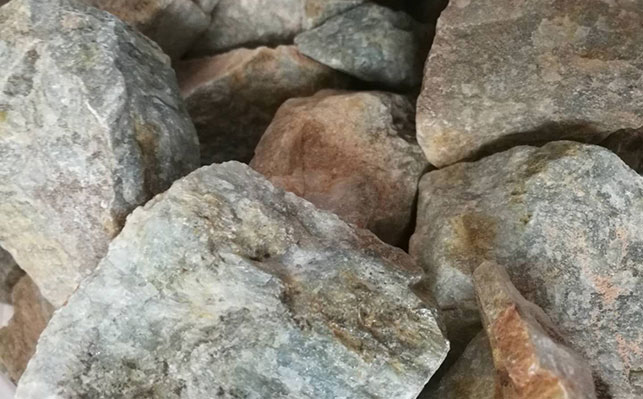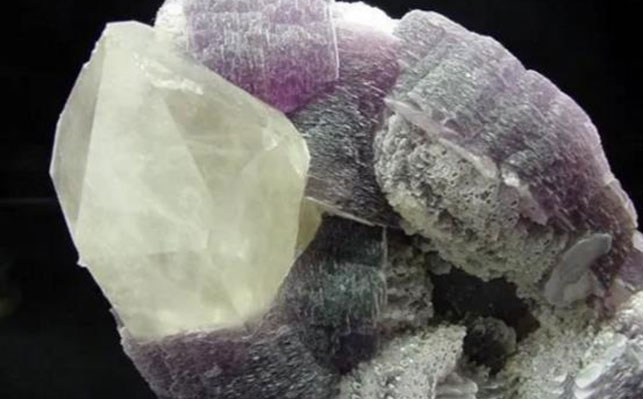
15311826613
Click to add WeChatLithium consumption in the battery industry is very large. With the rapid growth of lithium consumption, traditional lithium resources such as spodumene and low magnesium brine can no longer meet market demand, and non-traditional resources will be heavily utilized. In such a shortage situation, which lithium ores are worth mining and what are their ore characteristics? Let’s find out together!
Currently, the lithium ores with industrial mining value include spodumene, lepidolite, lithium feldspar, lithium mica and lithiumite.
Spodumene has always been the main raw material for lithium extraction. It has a simple composition, high lithium grade, and a theoretical Li2O content of 8.03 %, but due to sodium and potassium replacement, the Li2O content is usually 2.91%~7.66%.

The ubiquitous spodumene in nature is α-spodumene, Li+ is filled in [SiO4] tetrahedron and [AlO 6] The stable structure is formed in the middle of the octahedron, making α-spodumene highly chemically inert. It hardly reacts with various acids and bases except hydrofluoric acid. α-spodumene transforms into β-spodumene with a tetragonal shelf-like structure above 1000°C. Al replaces part of the Si positions to form [AlO4] tetrahedron, Li +Supplementary charge deficit fills the structural gaps, giving it more space for movement. The increased crystal volume has greater ion exchange properties, making β-spodumene more chemically active.
Lepidolite has large reserves and complex composition. The lithium grade is lower than that of spodumene and has not yet been applied on a large scale. Lepidolite is a monoclinic crystal system with a partial crystal structure. Si4+ is replaced by Al3+, the charge deficit between layers is supplemented by alkali metal ions, and the active oxygen in the [SiO4] tetrahedron Opposite to OH-, it forms an octahedral structure. Al3+ fills the octahedral gaps to form Al-O octahedral sheets, two layers of silicon-oxygen tetrahedrons and one layer of silicon-oxygen tetrahedrons. The aluminum-oxygen octahedron sheets form a TOT-type three-layer space configuration. The roasting decomposition temperature of lepidolite to extract lithium is lower than that of spodumene. The purpose of high-temperature roasting is generally to obtain bulky materials for easy leaching without a crystal transformation process.

Lepidolite has a similar structure to lepidolite, but has a high iron content (about 11% FeO) and often contains manganese ( MnO about 3.2%). Its crystal is a flaky aggregate of monoclinic crystal system, and its crystal structure is in tetrahedral and octahedral sequence patterns.
The crystal of luthite is plate-shaped, monoclinic, and is a shelf-like silicate mineral. The crystal structure consists of a three-dimensional skeleton composed of TO4 tetrahedrons (where T=Li, Al, Si) connected at the vertex corners, and is formed by [LiO4], [AlO< sub>4] tetrahedral connection. When β-spodumene is cooled below 680°C, it undergoes solid phase transformation into lithium feldspar.
The reserves of lithium feldspar are small and mainly distributed in Zimbabwe, Canada, Brazil, Australia and Russia. Zimbabwe has the largest reserves of 177,000 tons. Xinjiang Altai and Hubei in my country also produce small amounts of lithium. Feldspar.
Hydronite crystals are in the form of dense massive aggregates, triclinic system, and are shelf-like phosphate minerals. The crystal structure is [PO The 4] tetrahedrons and [AlO6] octahedrons are connected in sequence. Li is placed between the [PO4] tetrahedron and the nearest t [AlO6] octahedron in a six-coordinate manner. In the crystal structure, F and OH can replace each other. When there are more OH than F, the mineral is called hectorite.
The ore is mainly distributed in Canada, Brazil, Zimbabwe, South Africa and other places. The ore has high lithium content and is easy to decompose. It attracted much attention in the early days of the lithium extraction industry. However, due to the small reserve, The scale of lithium extraction is small. my country's lithium products mainly come from ore resources, of which imported spodumene accounts for up to 70%.